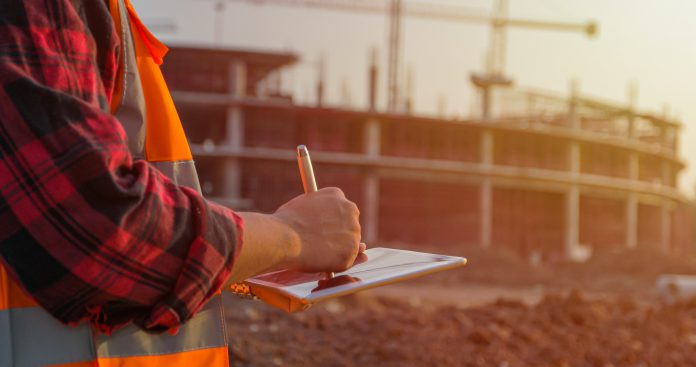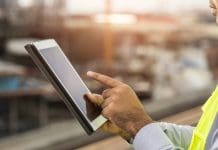Kate Waterfield, marketing manager at The Access Group, explores how to handle material shortages in construction with cost value reconciliation (CVR)
A comprehensive Cost Value Reconciliation (CVR) scheme should enable you to handle the current material and labour shortages, and even take advantage of them.
Building projects are being cancelled, put on hold, and otherwise disrupted by shortages of both materials and labour. There are no shortages of explanations, though, as it has been blamed on everything from Brexit to the pandemic, shipping problems, material scarcities themselves and even the steep rise in construction demand as various lockdowns ease and contractors rush back to work. It’s a compound problem and needs a comprehensive solution.
Simplifying the issue greatly, Brexit problems stem from the 60% of imported construction materials that come from the EU, and the red tape that now accompanies them causing mayhem at the docks. Global shipping is in chaos, anyway with the pandemic causing labour shortages at the docks in the Far East, container shortages, incidents like the Suez Canal blockage and rising shipping costs.
Some materials – steel, timber and concrete rebar, have risen dramatically in price because of international demand and rising shipping costs – a trend that is beyond the reach of both Brexit and Covid and which will set a trend for years to come. New tenders and contracts should reflect this.
The result of this, and more, is that contractors running on tight margins are going to find their margins even tighter. Schedules will need to be adjusted or workers temporarily laid off while they wait for the materials they need. This in itself is a risk of the workers going to other projects and then not being available. Prices will continue to rise, and suppliers, who are being hit as hard as builders, will be rotated more frequently as companies search the market for supplies. And, to put the icing on the cake, we have a shortage of lorry drivers to actually deliver what we manage to winkle out!
What is CVR?
If you are a contractor of any size, you should already be running CVR software, which is the basis of Statutory Accounts. It should allow you to calculate the retained profit in a contract on a regular basis based on what’s left after you have subtracted costs and retentions from its gross certified value – which includes things like subcontractor’s costs, materials, human resources and labour, plant and other running costs.
Its normally the job of the Contractors Quantity Surveyor, supported by the cost clerk to add costs and subcontractors liabilities as they occur, covering all on-site disciplines and including snagging and defects and the costs associated with clearing them. All other costs, such as labour, materials, plant are normally supplied to the contractors QS by Contractors Finance Controller. Integrating both sets of data results in the production of a final residual value, or profit margin.
There are, of course, many other costs that may not be included in the general running costs, but provision needs to be made for them, as well. These include adjustments for elements left off the original costing or measurements not picked up by the clients QS, date adjustments and variations or contractual claims not agreed by the client’s QS, and even the possibility of liquidation damages being charged by the employer. You mustn’t forget, either the subcontract liability scheme – where contractors have to take into account a subcontractors tax status as determined by HMRC (CIS scheme), and deduct that portion from payments, less the cost of materials.
In the normal course of events, a comprehensive CVR solution, like that provided by Access Construction, will cover all of these eventualities, and provide a regular update for management with an accurate and up to date final residual value or profit to date figure for the project. It should allow calculations to be made which balance increased material costs against delivery dates and work out, for example, whether paying more for earlier delivery will be cheaper than a fort-nights delay which entails laying off the workforce for that period.
Exceptional times
It’s unlikely we’ll ever have to go through another period like the last couple of years, but we should have learned valuable lessons from our experiences. In substance, that means that the cost value reconciliation software we choose should be flexible enough to handle all and any changes, re-act in real-time to problems as they occur, provide an up-to-date database of suppliers and other resources, and to use the information to update running costs and valuations to calculate a final retained value.
Bearing in mind the legal aspects of delays, liabilities and penalties, you also need to check existing and future tenders and contracts, to ensure that they have provisions to deal with the fluctuation of materials which may completion dates to be put back, and other hold-ups without incurring unnecessary penalties. To avoid incurring punishing liquidated damages for running behind the master programme, contractors should either renegotiate contracts or seek EoT (extension of time).
When budgets are tight, it is worth remembering that just one penalty not covered by the provisions in a contract could turn a profit into a loss.
Keeping a tighter reign on CVR also gives contractors the ability to ‘play the game!’. As suppliers, themselves, are seeing a much-reduced throughput, they will naturally, favour preferred customers. Some have raised prices to maintain their profitability, but the majority understand that the whole industry is under pressure and are willing to work with customers to maintain supplies at the right price and to maintain their goodwill for the future. If you know your current and future liabilities you can pay early to ‘jump the queue’ – hardly unethical, just good business practice.
Getting more out of CVR
If a CVR is run as it should be, therefore, it gives you greater control over expenditures and budgets. It should also be a straightforward process and easy to use. This is what you get with the comprehensive ConQuest Estimating. Pricing the work in each of construction element – subcontractors, materials, human resources, plant, labour, etc., enables you to track the value and costs against your accounts and costing system.
With an accurate budget, broken down under cost-centre headings, you will be able to purchase material, plant and allocate all costs associated with a project, providing easy and accurate cost value reconciliations.
Budget costs are usually revised monthly, based on the re-measured and amended internal valuation detailing what you should have spent, while the costing system calculates what has actually been spent. ConQuest Estimating gives you a number of simple ways to bring this information together to generate the final cost value reconciliation sheet.
Statutory compliance
Cost Value Reconciliation is fundamental to a project’s statutory compliance and Subcontractors are one of the single biggest areas of cost on a project. EasyBuild informs you what your subcontractor costs and liabilities have been during each monthly reporting period, with both the Commercial Manager and the Contractor’s Quantity Surveyor keeping on top of costs and identifying variations and additional works required. With better controls, they can ensure that accurate information is available to substantiate monthly Client applications.
EasyBuild’s industry-driven modules support the explicit needs of individual trades within a construction project and are geared towards growth and usability with an intuitive user interface, modular structure, and full scalability. It’s a complete and comprehensive solution that will grow as your business grows. It’s customisable, fully auditable, fully compliant and provides authorisation controls at key financial and commercial stages.
All of the key financial components of a project can be accessed from one smart dashboard, using information from authorised personnel who can input and adjust profitability, costs, revenues, subcontractor liabilities and valuation adjustments in a secure and controlled environment.
CVR data is, of course, maintained for the whole of a project’s life, and CVR summary data can be used from all of a contractors projects to prepare monthly management and period end financial accounts.














